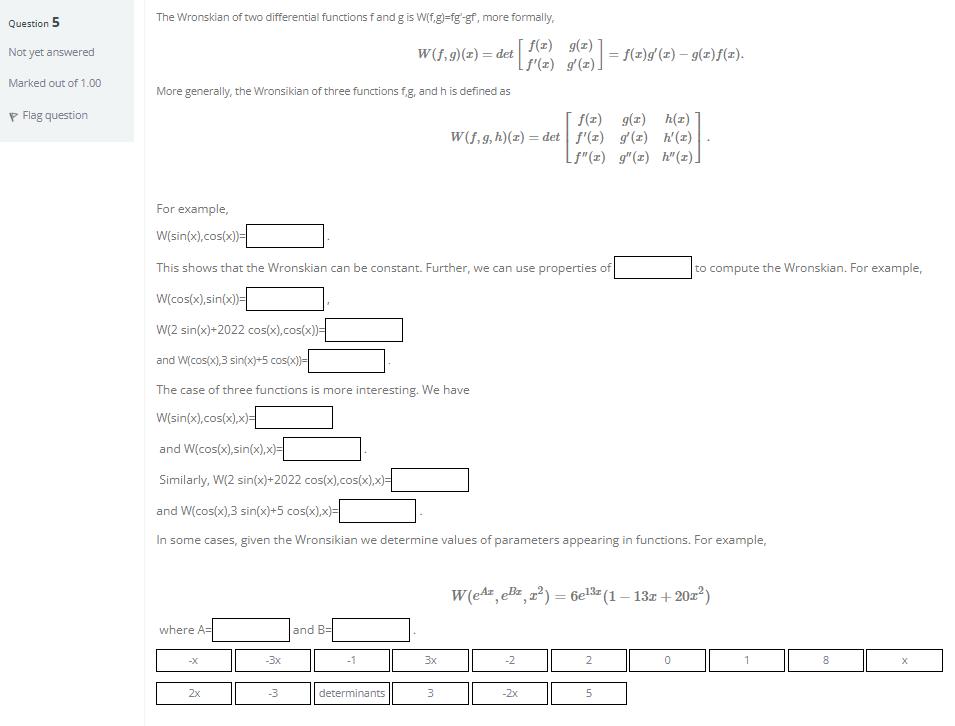Answered step by step
Verified Expert Solution
Question
1 Approved Answer
Question 5 Not yet answered Marked out of 1.00 P Flag question The Wronskian of two differential functions f and g is W(f,g)-fg-gf, more

Question 5 Not yet answered Marked out of 1.00 P Flag question The Wronskian of two differential functions f and g is W(f,g)-fg-gf, more formally, W(f,g)(x) = det More generally, the Wronsikian of three functions f,g, and h is defined as W(f, g, h)(z) = det f'(1) g'(z) For example, W(sin(x),cos(x))= This shows that the Wronskian can be constant. Further, we can use properties of W(cos(x),sin(x))= W(2 sin(x)+2022 cos(x),cos(x))= and W(cos(x),3 sin(x)+5 cos(x))= The case of three functions is more interesting. We have W(sin(x),cos(x),x)= and W(cos(x), sin(x),x)= Similarly, W(2 sin(x)+2022 cos(x),cos(x),x)= and W(cos(x),3 sin(x)+5 cos(x),x)= In some cases, given the Wronsikian we determine values of parameters appearing in functions. For example, W(eAz, eBz, 1) = 6e (1-13z +20x) where A= and B- 3x -2 2 0 2x 3 -2x 5 -3x -3 determinants [f'(2) g(z)] = f(2)g'(z) g(2)(2). f(x) g(x) h(z) (1) Lf"(x) g"(z) h"(z)] to compute the Wronskian. For example, 1 8 X
Step by Step Solution
★★★★★
3.42 Rating (149 Votes )
There are 3 Steps involved in it
Step: 1
Wsinx Cosx This show that the Wronskion Con be consta...
Get Instant Access to Expert-Tailored Solutions
See step-by-step solutions with expert insights and AI powered tools for academic success
Step: 2

Step: 3

Ace Your Homework with AI
Get the answers you need in no time with our AI-driven, step-by-step assistance
Get Started


